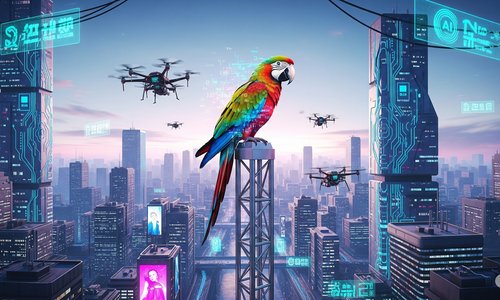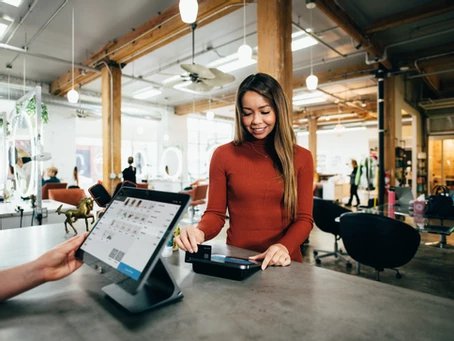
A Promessa e o Perigo da Nova Revolução Digital
A nova corrida tecnológica global levanta uma pergunta urgente: estamos prontos para confiar na inteligência que criamos?

Rob Saker em seu blog TotalRetail menciona que a Inteligência Artificial (IA), está sendo usada como um fator diferenciador entre varejistas menores, como forma de avançar e capturar participação de mercado. A lacuna entre adotantes e não adotantes continuará a crescer, o que significa que a IA não é mais apenas uma maneira de ficar à frente dos concorrentes - ela se tornou uma parte essencial para permanecer relevante no setor e manter a inovação.
O interesse pela aplicação de inteligência artificial no setor de varejo tem sido muito significativo, observa-se pelo Google Trends claramente esta tendência entre o período de 2016 a 2020.

Blake Morgan em artigo publicado na Forbes define que a experiência básica de varejo não mudou muito ao longo dos anos: entre em uma loja, procure o produto certo e faça uma compra. A inteligência artificial tem o potencial de transformar completamente a experiência tradicional de varejo e levá-la ao próximo nível com personalização, automação e maior eficiência.
A potencialidade da tecnologia poder ser percebida pelos investimentos do setor em inteligência artificial, A Accenture relata que o investimento em colaboração de IA e experiência do usuário pode aumentar as receitas das lojas de varejo em 38% até 2022. Além disso, 72% das lojas de varejo disseram que a tecnologia inteligente será fundamental para a diferenciação de mercado de suas organizações. E prevê-se que a IA acrescentará 16 trilhões de dólares ao PIB mundial até 2030.
A comprovação da efetividade na adoção de inteligência artificial no setor de varejo físico é mais evidente quando se observa grandes players do mercado utilizando-a como um diferencial competitivo, por exemplo a Amazon inaugurou na cidade de Seatle, seu primeiro supermercado completo, o Amazon Go Grocery, O estabelecimento possui câmeras espalhadas com tecnologia de visão computacional para que você pegue o que precisa e vá embora sem passar por nenhuma fila: tudo é cobrado automaticamente na sua conta da Amazon. (WINTERMEIER, 2020)

Figura 1 - A entrada de uma loja Amazon Go (Foto: André Fogaça/Tecnoblog)
O aplicativo de realidade aumentada da IKEA 'Place' permite que os clientes visualizem como os móveis da IKEA se encaixam em seus espaços domésticos. A IKEA possui mais de 817 milhões de clientes por ano e é uma das "empresas mais amadas em todo o mundo", a experiência do usuário é potencializada, ainda mais quando pensamos no período da pandemia, onde a visita a uma loja física está parcialmente comprometida.

No cenário do varejo digital as aplicações estão ainda mais potencializadas, podemos citar o caso do Pinterest que introduziu recentemente uma extensão chrome atualizada que permite aos usuários pesquisar qualquer produto on-line por meio de uma imagem, na prática o isso significa uma amplificação na interatividade do cliente ao se deparar com uma foto de um homem usando um chapéu de cowboy e calça jeans e pensar em “jeans legais!”, Agora poderá passar o mouse sobre os jeans e a tecnologia de “pesquisa visual” do Pinterest permitirá que você navegue em produtos similares pelo mesma loja de varejo.

Outra solução extremamente desruptiva é o caso do IFOOD, que no auge do seu crescimento exponencial investiu U$ 20 milhões em pesquisa e implantação de aprendizado de máquina, aprendizado profundo, eficiência logística e outras relacionadas ao ecossistema da empresa, desta forma O aplicativo iFood recomenda restaurantes e pratos de acordo com o gosto do usuário por meio de modelos processados no AWS. A empresa consegue controlar o que será mostrado no aplicativo, estratégias e promoções graças a esses algoritmos e como resultado A iFood vem obtendo ganhos significativos de produtividade e melhorias nos níveis de serviço. Na área de logística, a distância percorrida pelo entregador foi reduzida em 12% graças à otimização das rotas. O mesmo aconteceu com o tempo de inatividade desses profissionais, que foi reduzido em 50%, isso impactou de forma positiva no SLA de entrega que saltou de 80% para 95%.

As soluções de inteligência artificial não são de forma alguma uma panacéia universal, no entanto o questionamento atual não se restringe ao escopo de adoção ou não da tecnologia, mas o porquê não adotar, haja vista resultados tão expressivos no setor. As estimativas são de que 80% da economia virá da melhoria da IA em gestão da cadeia de abastecimento e devoluções com também da retenção pois o cliente não possui uma fidelização enraizada na marca, mas sim na experiência de compra, buscando empresas que conheçam suas preferências e que façam recomendações de produtos que reflitam suas expectativas. Desta forma o atual desafio é inovar ou correr o risco de perder para concorrentes mais experientes e tecnologicamente avançados.
SAKER, Rob. The Impact of Artificial Intelligence in Retail. Disponível em <https://www.mytotalretail.com/article/the-impact-of-artificial-intelligence-in-retail/>. Acesso em 06/08/2020.
KOROLOV, Maria. IA no varejo: sobrevivência dependerá de inteligência. Disponível em <https://cio.com.br/ia-no-varejo-sobrevivencia-dependera-de-inteligencia/>. Acesso em 07/08/2020.
WINTERMEIER, Nikole. 9 Innovative AI Use Cases in Retail. Disponível em: <https://blog.crobox.com/article/future-of-retail>. Acesso em 09/08/2020.
MORGAN, Blake. The 20 Best Examples Of Using Artificial Intelligence For Retail Experiences. Disponível em: < https://www.forbes.com/sites/blakemorgan/2019/03/04/the-20-best-examples-of-using-artificial-intelligence-for-retail-experiences/#76039cbb4466> Acesso em 05/08/2020.
Professor universitário com mais de 12 anos de experiência, mestre em inovação tecnológica pela UFTM, cientista de dados, palestrante, secretário de administração com mais de 5 , anos de experiência.

A nova corrida tecnológica global levanta uma pergunta urgente: estamos prontos para confiar na inteligência que criamos?

Por que dominar a IA será a nova alfabetização do século XXI

Conselhos de Administração devem evoluir da supervisão reativa para a antecipação estratégica, frente à crescente complexidade e volatilidade dos ambientes de negócios.

De 14 a 25 de julho, reserve suas manhãs das 08h00 às 09h30 para participar da tradicional Maratona I2AI! Uma jornada intensa com debates e palestras sobre temas essenciais: Ética,